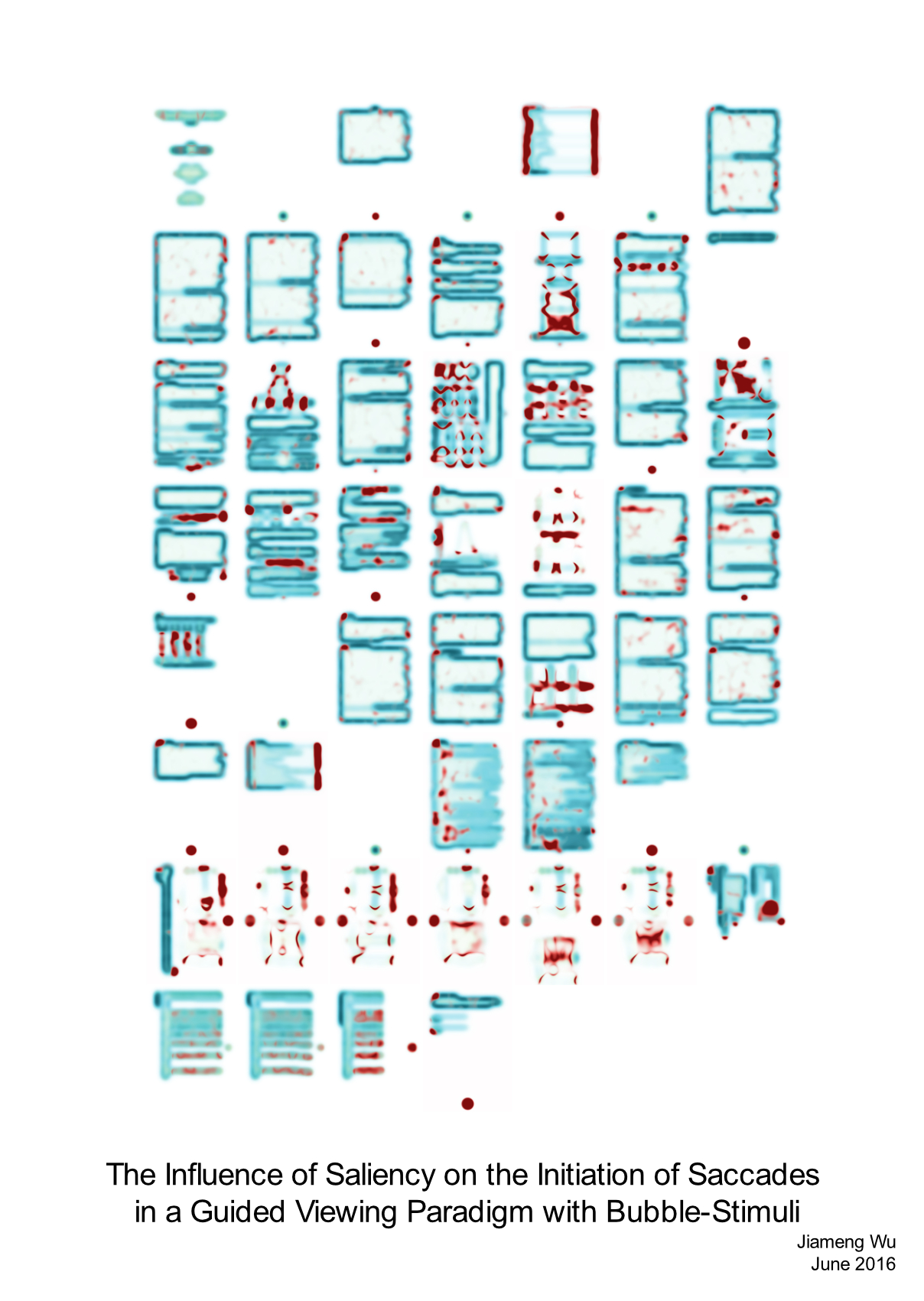The influence of Saliency on the Initation of Saccades in a Guided Viewing Paradigm with Bubble-Stimuli
for Jiameng Wu
Jiameng’s thesis explores eye-movements and their relationship to visual stimuli, using computational vision models. The Thesis Art piece applies a subset of the same image filters to the manuscript itself, creating an abstract visual representation of the study’s findings.
The Creation Process
The visual concept for this Thesis Art piece came from the use of computer vision algorithms in the research itself. The idea was to apply the same filters to the entire manuscript as had been applied to the stimuli, creating an abstract visual interpretation of the thesis. The biggest challenge for Benedikt was finding the right selection of features to use and balancing the colors in a way that made sense while also representing the research’s lack of strong predictive results of the image features on eye-movement durations themselves.
Artistic Concept
The resulting Thesis Art plays with the concept of patterns emerging from something without purposeful structure, much like the classic Rorschach psychotherapy test. The abstract shapes and figures created by these filters reflect the elusive nature of the findings in the research — a lack of clear structure or strong results.
Benedikt Ehinger
“This artwork applies the thesis’ own computer vision filters to itself, turning structure into abstraction.”
Personal Reflection
Benedikt reflects on the unique approach of Jiameng’s Thesis Art piece, where multiple miniatures were used to display the thesis pages, with no direct relation to the text except for the overall global structure. He finds it fascinating how the visual presentation, through filters, emphasizes the abstract and structural aspects of the research. In a light-hearted moment, he recalls. “Meng later went on to do a PhD — how cool!”
